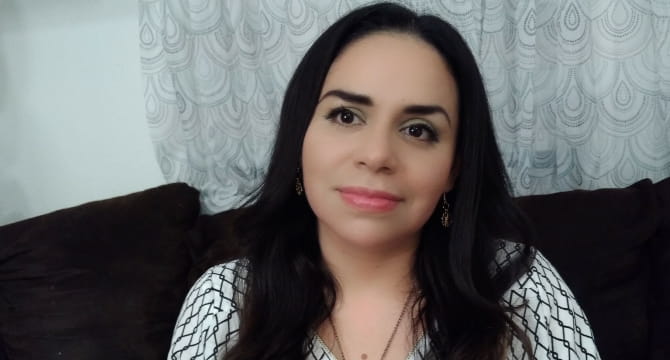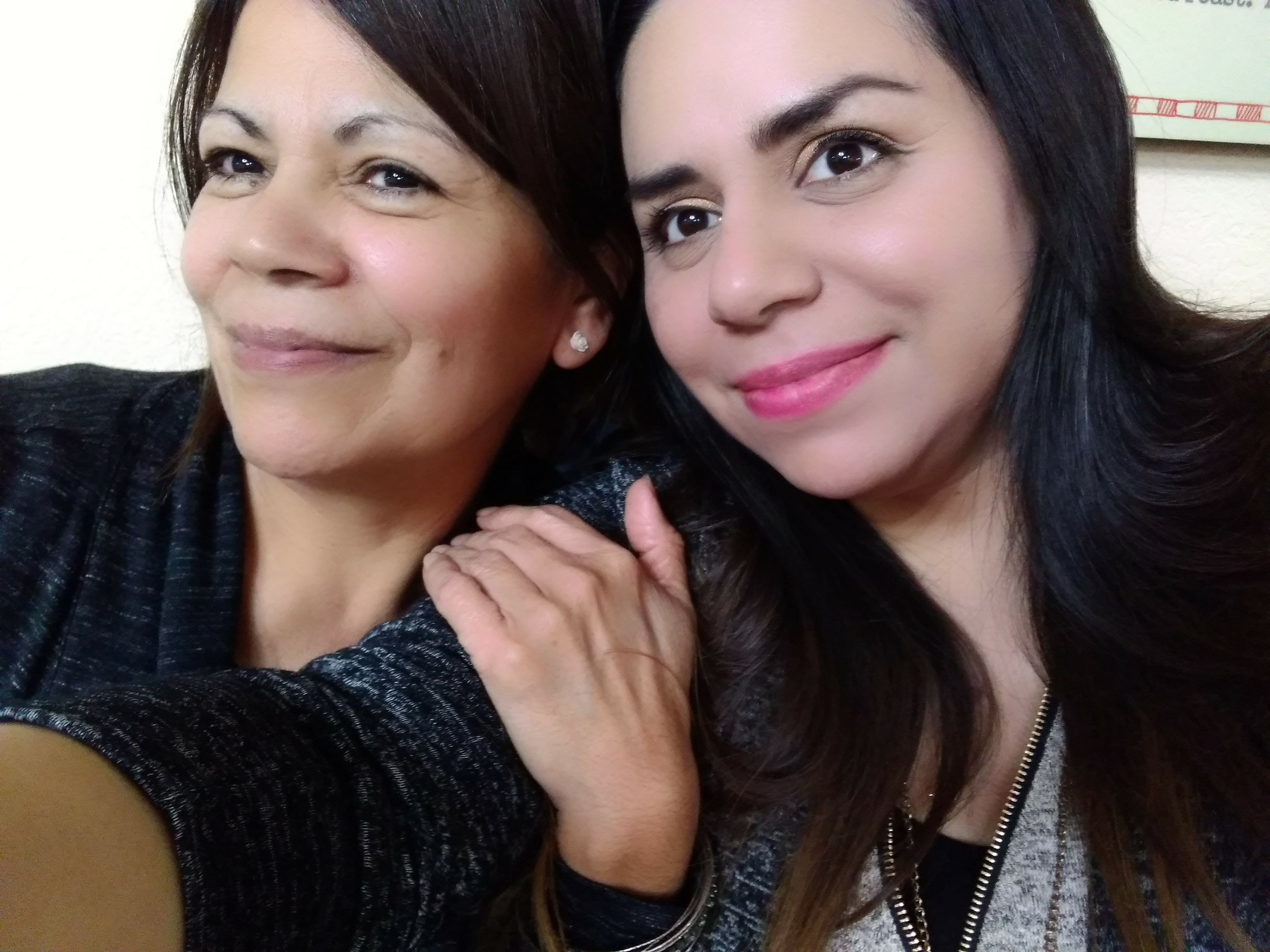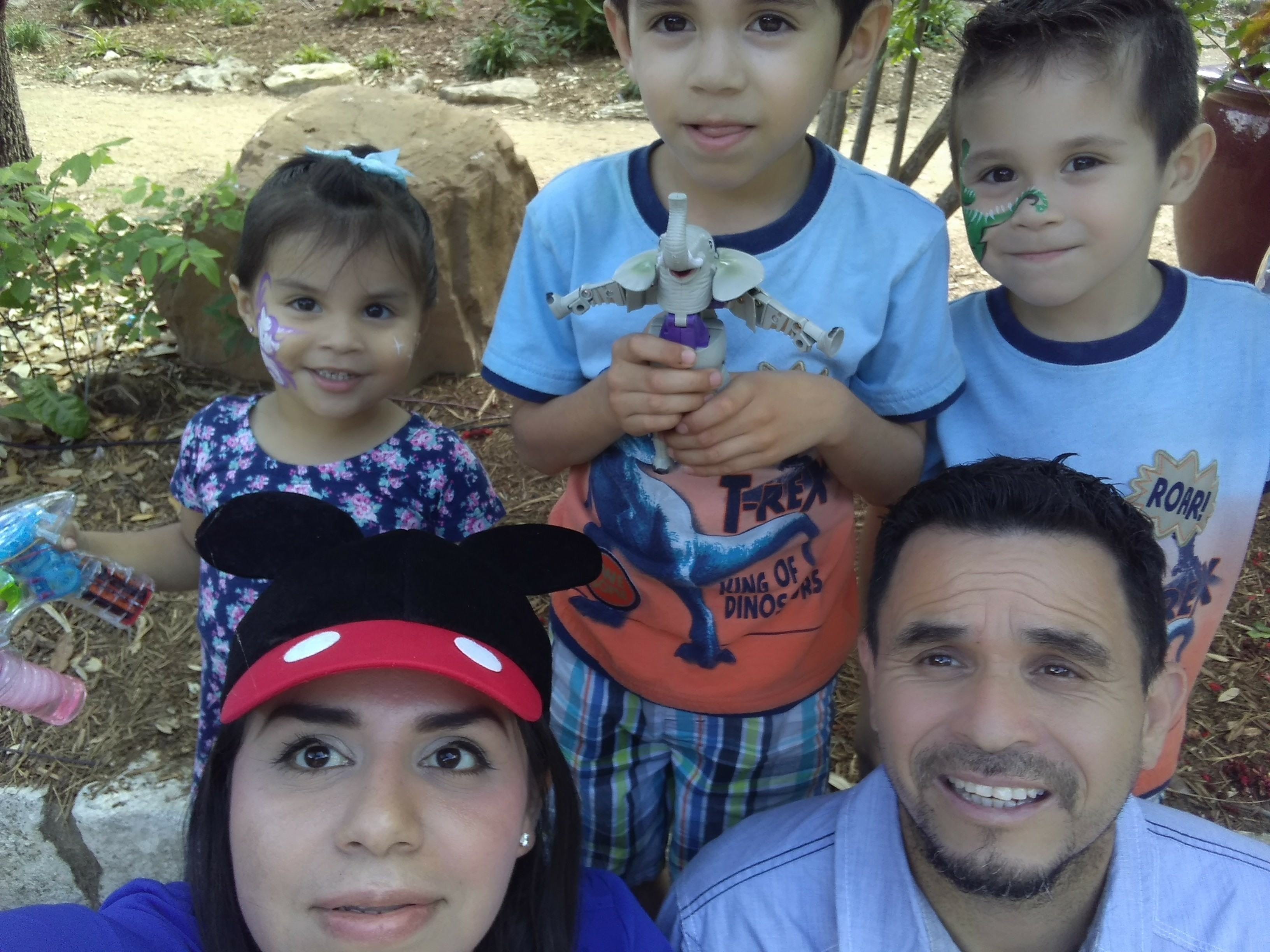Mother of three didn't know what a stroke was -- until she had one on Christmas Eve
By American Heart Association News

Maria Juarez felt dizzy when she tried lifting her 1-year old daughter. "Everything started moving. My body felt like an earthquake, a small one." (Photo courtesy of Maria Juarez)
On the morning of Dec. 24, 2016, Maria Juarez awoke in her San Antonio home with a bad headache. She also noticed something wrong with her hearing – she thought water from the previous night’s shower had lodged in her ear.
She proceeded to make breakfast for her three young children, but she got dizzy as she tried to lift her 1-year-old daughter out of the highchair.
“Everything started moving. My body felt like an earthquake, a small one,” she said.
She made it to the couch just before the entire right side of her body collapsed. She couldn’t move her arm or leg. Her vision started to blur and she couldn’t speak without slurring her words.
With her husband at work, Juarez called 911, but the operator couldn’t understand what she was saying.
“I kept telling them my address, but they [didn’t] understand. They transferred me from one person to another,” she said. “I got so frustrated I hung up.”
She then called her mother, who immediately dialed 911 after listening to her daughter try to talk.
“I said, ‘You guys need to go to my daughter. I don’t know what happened, but she’s bad,’” Maria Puente recalled. “I said, ‘She’s crying. And her speech – it’s very bad.’”

Juarez (right) called her mother, Maria Puente (left), after 911 operators couldn't understand her. "I said 'You guys need to go to my daughter. I don't know what happened but she's bad.'" (Photo courtesy of Maria Juarez)
After doctors at a nearby hospital recognized the severity of her stroke, Juarez was then rushed to another hospital with a comprehensive stroke center. There, a scan showed a clot blocking blood flow to a major artery in the back of her brain. The clot was removed through a procedure in which a surgeon snaked a stent and catheter through an artery in Juarez’s groin and up to her brain. The clot was then trapped inside the stent and pulled out.
An MRI showed little to no brain damage. Juarez walked out of the hospital five days later.
Dr. Ramesh Grandhi, the Texas neurosurgeon who removed Juarez’s clot, said he has little doubt that timing was critical in her extraordinary recovery. Without the quick recognition of paramedics and initial emergency room doctors, “there is no question she would have suffered a life-ending or a profoundly life-changing stroke because of where the clot had lodged,” he said.
Grandhi, now an assistant professor at the University of Utah’s department of neurosurgery, said seeking medical help immediately upon the first signs of stroke is crucial.
According to guidelines, the clot-snaring procedure – known as mechanical thrombectomy – can be used in some patients within six to 24 hours after symptoms start. The time window for a clot-busting drug called alteplase is even narrower – three to 4 ½ hours.
Juarez didn’t know what a stroke was until the morning it nearly cost the 35-year-old her life.
“The guys from the ambulance, they told me, ‘You're having a stroke.’ But I did not know what a stroke was,” she recalled. “I figured, ‘OK. Well, give me a pill and it’ll go away.’ I never knew it was a life-or-death situation.”
Juarez tries whenever possible to help raise awareness for others who, like herself two Christmas Eve mornings ago, have no idea what a stroke is.
“Everyone needs to be aware of the signs because once they happen, time is ticking,” she said. “You can't wait it out.”
Juarez awoke from her stroke without any cognitive impairment, although her double vision continued for several months before disappearing one morning. While she can walk, she still has problems with her balance and has since moved her family in with her parents so they can help with her three children, now 6, 4 and 2.

Post-stroke, Juarez has lingering balance problems, and her family now lives with her parents, who help with childcare. Shown with husband, Juan (right), and children (in order from top left) Sofia, Angel and Christian. (Photo courtesy of Maria Juarez)
“The stroke changed my life forever. It's a very emotional thing for me and I still haven’t overcome everything, but I'm very grateful to doctors and to God,” said Juarez, who is now taking a blood thinner.
“I'm a stroke survivor and very proud of it. A stroke doesn't define who you are. It defines what you've overcome.”
If you have questions or comments about this story, please email [email protected].




